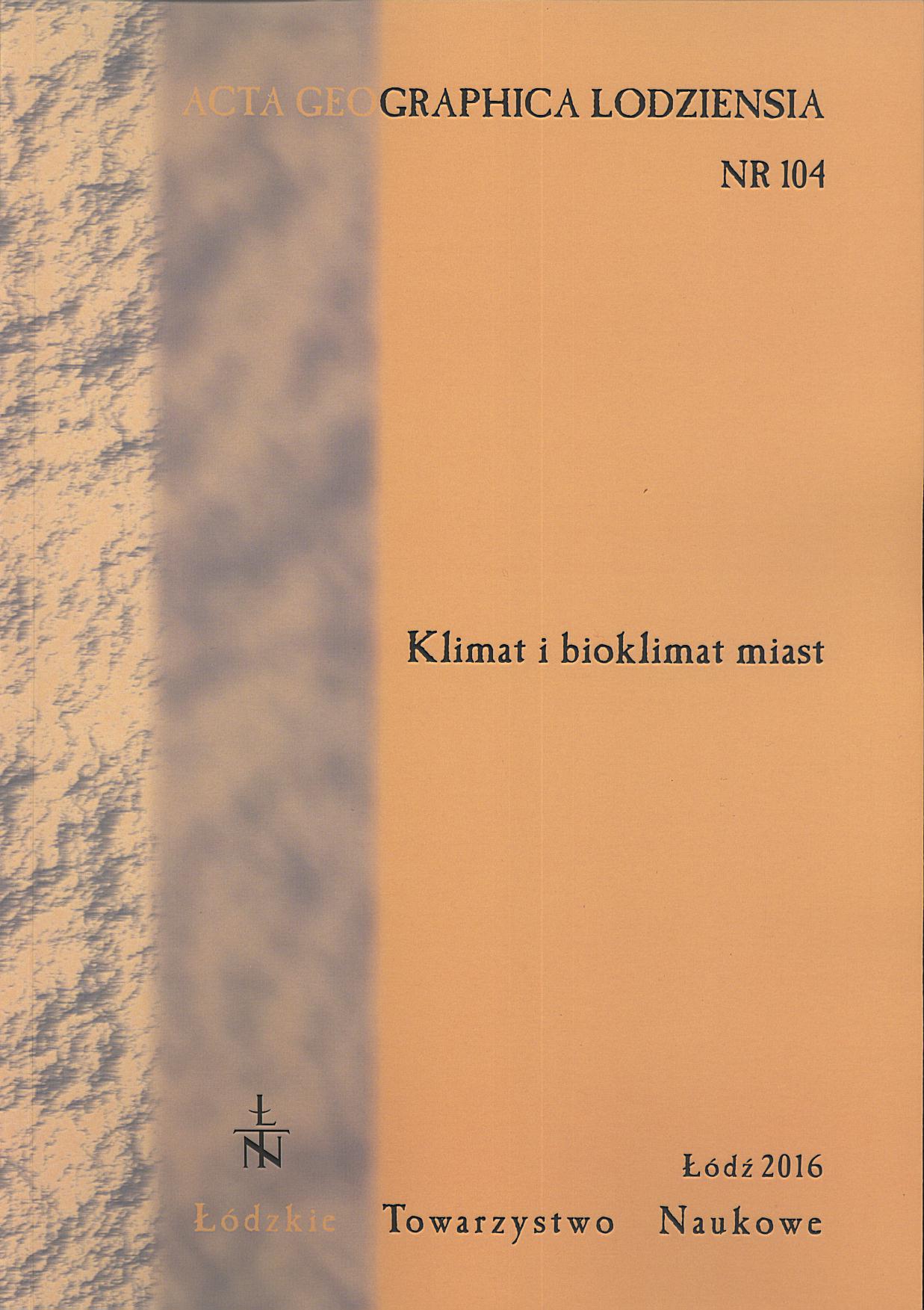Dobowa dynamika występowania alergennego pyłku traw w Krakowie w zależności od warunków meteorologicznych
Intradiurnal dynamics of the allergenic grass pollen
in Krakow in relations to the meteorological conditions
Author(s): Katarzyna Piotrowicz , Dorota Myszkowska, Katarzyna LeśkiewiczSubject(s): Geography, Regional studies, Environmental Geography
Published by: Łódzkie Towarzystwo Naukowe
Keywords: grass pollen grains; Poaceae; meteorological conditions; Krakow
Summary/Abstract: In Poland, an increase in the incidence of pollen allergy caused, first of all, by the airborne pollen allergensof anemophilous plants, especially grasses (Poaceae) has been noted for decades. It is stated that upto 90% of patients suffering from pollen allergy is sensitive to grass allergens (Obtułowicz et al. 1990,1991).In spite of numerous papers on grass pollen concentrations in the air, only a few articles refer to theintradiurnal dynamics of pollen occurrence. For this reason, the aim of the study was to estimate the regularitiesin the intradiurnal dynamics of grass pollen grain numbers (Poaceae) against a background of meteorologicalconditions in Krakow.The hourly pollen data and the selected meteorological elements (precipitation, relative humidity, sunshineand wind speed) obtained in Krakow in 2003–2014 were used.The pollen concentrations at particular hours, e.g. at 12.00 AM, refer to pollen occurrence between11.00 and 12.00 AM (UTC+1). Aeropalinological observations were performed using the volumetricmethod and VPPS 2000 (Lanzoni Ltd.) sampler. The sampler is located on the roof of the CollegiumŚniadeckiego building (Jagiellonian University, Institute of Botany) (20 m above ground level), 300 mfrom the meteorological station where the meteorological elements were measured.The highest hourly pollen count was found between 11.00 and 12.00 AM UTC+1 during the wholeseason (May–August), while in particular months clear differences in time of the maximum pollen occurrencewere observed (Fig. 1). In May, the relatively high pollen count, about 20 pollen grains/m3 occurredin the early morning (6.00 AM), and it lasted up to 9.00 AM (Fig. 2). During the day (24 hrs), twooccurrences of an increase in the pollen count were observed, in 6.00–9.00 AM and 4.00–8.00 PM(UTC+1). In June, sensitive patients are exposed to a high pollen occurrence (more than 30 pollen grainsfrom 2.00–3.00 AM to 4.00–5.00 AM), then a decrease in pollen count is noted, and finally the maximumcount is observed at 9.00 AM. In July, the highest pollen occurrence was observed at 10.00 AM, 4.00 PMand 8.00 PM. At the end of the grass pollen season, the maximum pollen count was relatively low – it didnot reach 10 pollen grains (Fig. 2).During warm, dry weather, two occurrences of an increase in the pollen count were observed, in6.00–9.00 AM and 4.00–8.00 PM UTC+1. On the other hand, the pollen concentration decreases atnight, although in case of the wind speed increase and the relative decline in humidity, a repeated pollenoccurrence is possible because of redeposition.It is thought that precipitation, especially torrential rain, purifies the air of the pollen grains. Our analysesdid not confirm this thesis. After precipitation, the anthers dry very quickly (after 30–60 minutes) andthe increase in pollen concentration is observed. Thus patients allergic to grass pollen, could enjoy only avery short-term of symptom mitigation.
Journal: Acta Geographica Lodziensia
- Issue Year: 2016
- Issue No: 104
- Page Range: 173-179
- Page Count: 7
- Language: Polish

